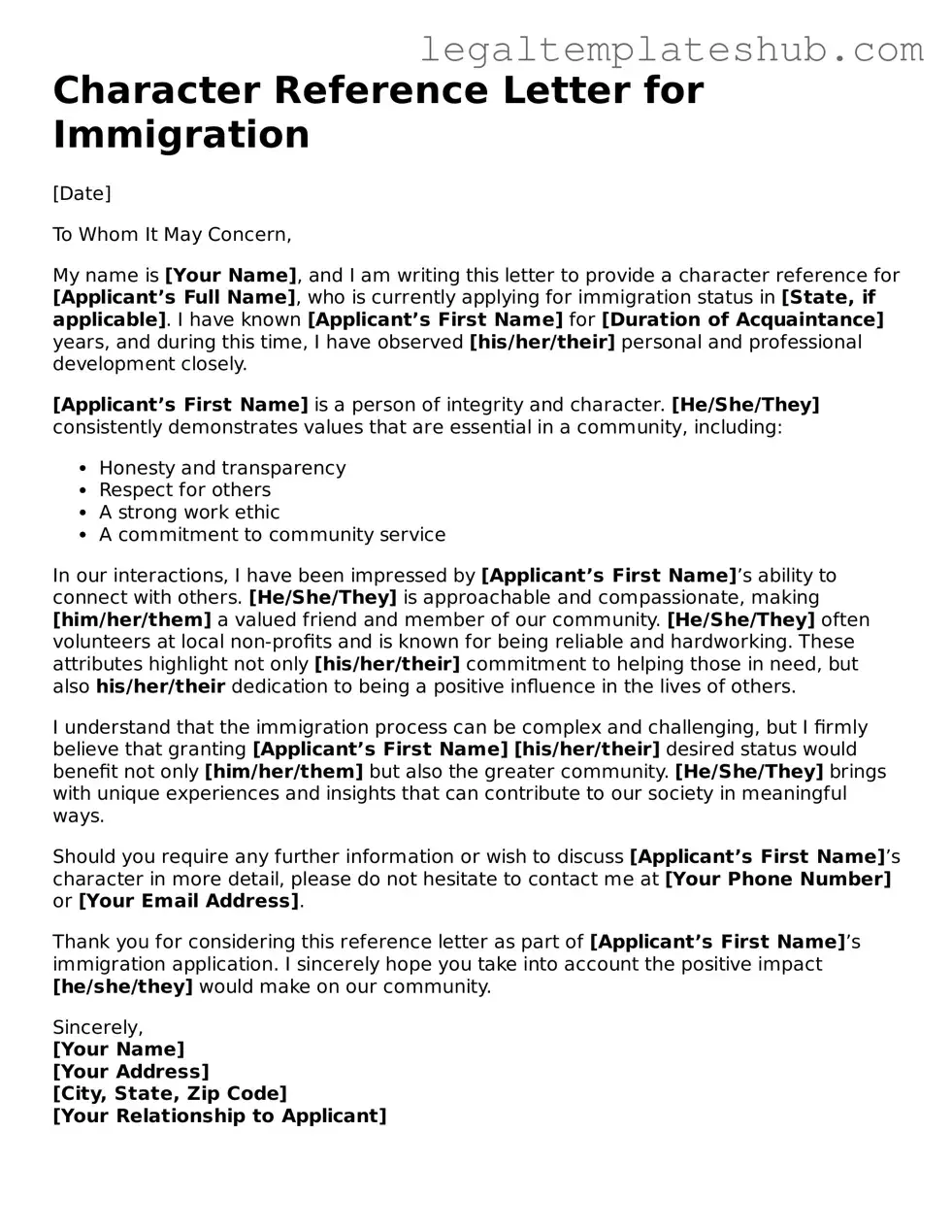Printable Character Reference Letter for Immigration Template
The Character Reference Letter for Immigration is a crucial document that provides insight into an individual's character and moral standing, often required during immigration proceedings. This letter, typically written by friends, family, or community members, can significantly influence the outcome of an immigration case. Understanding how to craft an effective reference letter is essential for those seeking to support a loved one in their immigration journey.
Ready to make a difference? Fill out the form by clicking the button below.
Access Editor
